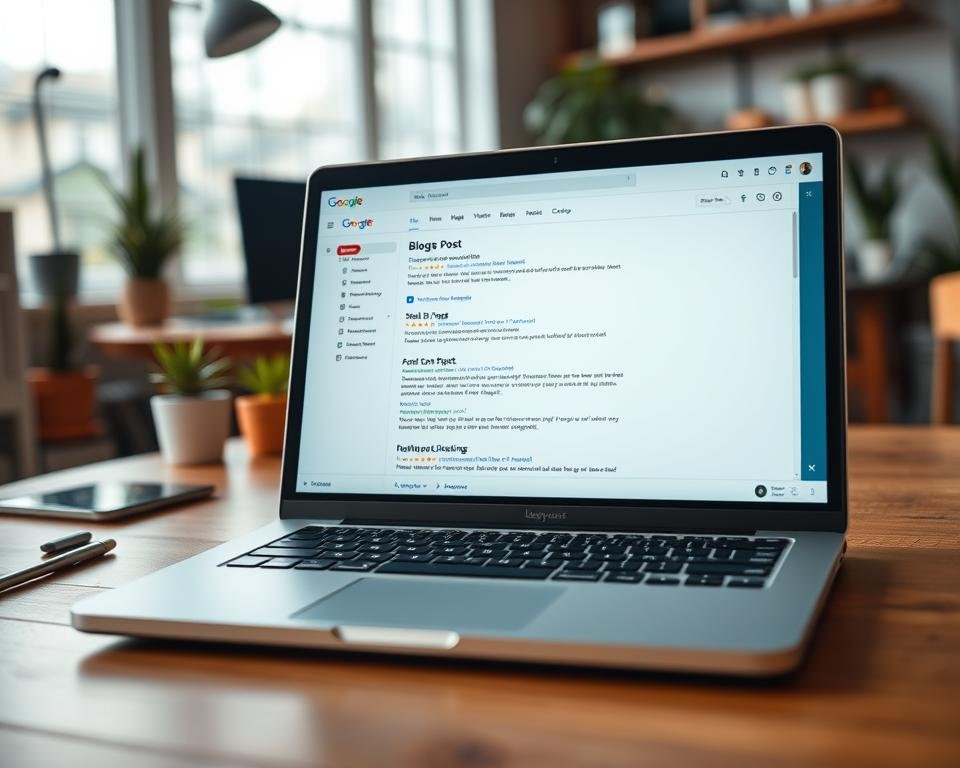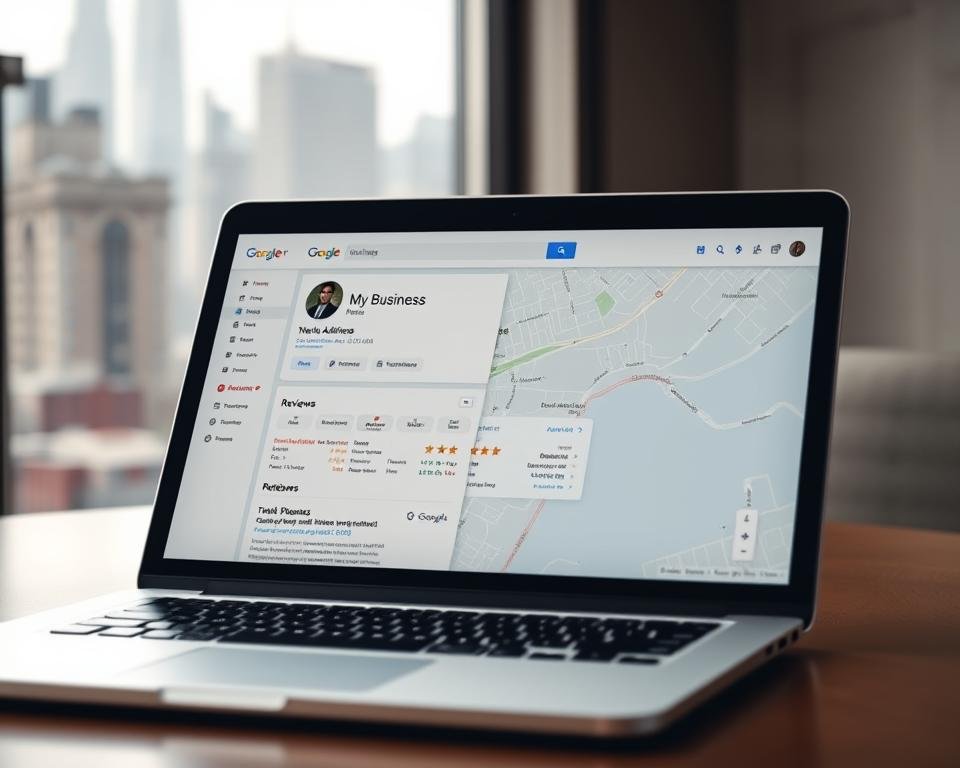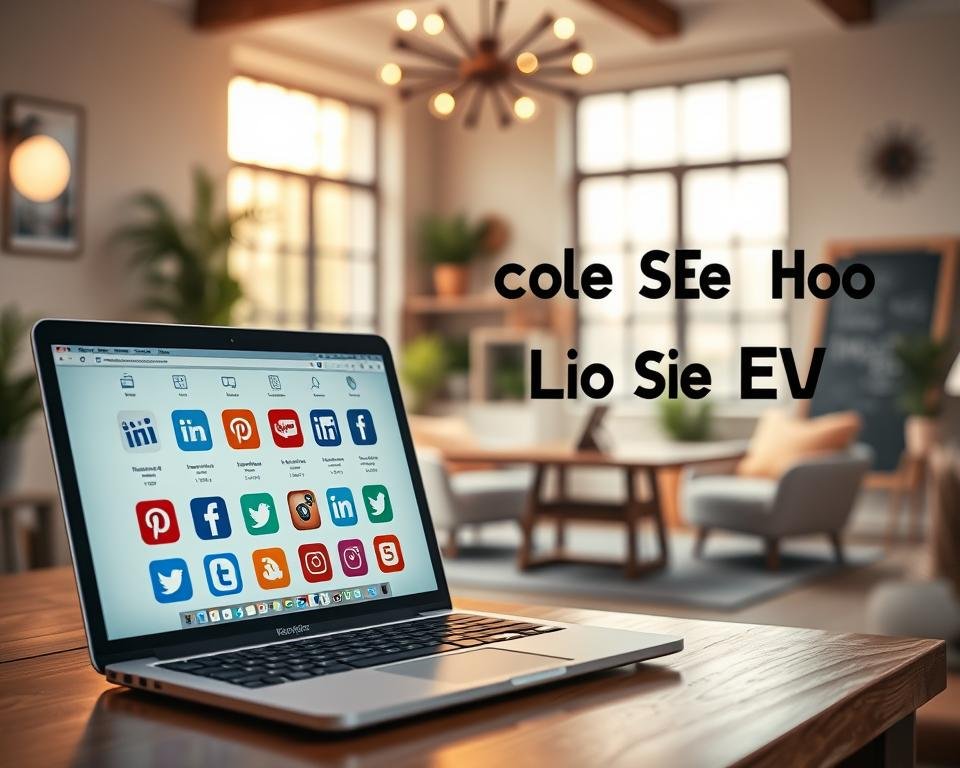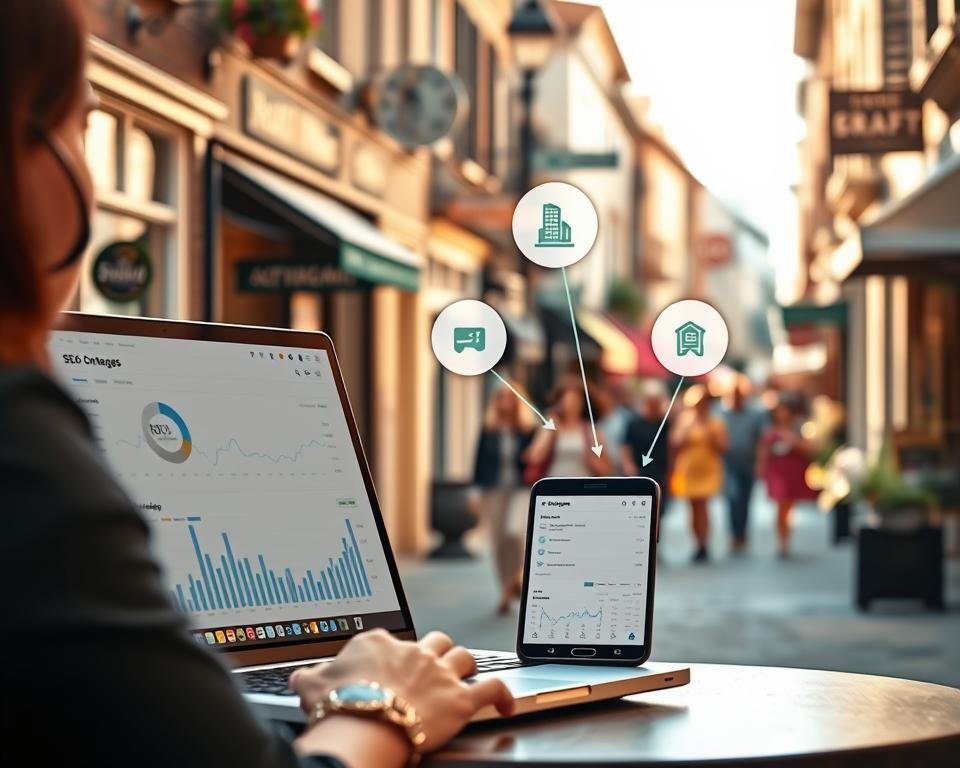As a new blogger, making your blog seen by locals can feel hard. But, with the right plan, you can get more eyes on your blog.
I’ll show you how to make your blog stand out online. By using smart local SEO tips, you can reach more people who matter to you.
Key Takeaways
- Understand the basics of local SEO and its importance for new blogs
- Learn how to conduct keyword research for local SEO
- Optimize your blog posts for better local search visibility
- Improve your online presence with a solid local SEO strategy
- Attract more local readers to your blog
Understanding Local SEO Basics
As a blogger, learning about local SEO can really help your blog show up in local searches. Local SEO makes your blog more visible to people in your area. It’s a key part of digital marketing.
What is Local SEO?
Local SEO means making your blog show up in local search results. You use special keywords and techniques to help search engines like Google find your blog. This way, more local people can find your blog.
Key components of local SEO include:
- Using location-specific keywords
- Creating content relevant to local audiences
- Optimizing your blog’s metadata and structure
- Building high-quality local citations
Importance of Local SEO for Blogs
Local SEO is very important for blogs that focus on a specific area. It helps your blog show up in local searches. This means more people in your area will see your blog.
| Benefits of Local SEO | Description |
|---|---|
| Increased Local Visibility | Appearing in local search results increases your blog’s visibility among local audiences. |
| Targeted Traffic | Local SEO helps attract more targeted traffic to your blog, increasing the chances of engagement. |
| Competitive Advantage | By optimizing for local SEO, you can gain a competitive edge over other bloggers in your niche. |
Learning about local SEO can really help your blog. It makes your blog more visible to local readers. Using a blog SEO checklist can help you make sure you’re doing everything right for SEO optimization for blogs.
Keyword Research for Local SEO
Local SEO needs the right keywords. This makes keyword research key. It helps your blog reach the local audience you want.
Tools for Effective Keyword Research
You need the right tools for keyword research. Google Keyword Planner, Ahrefs, and SEMrush are top choices. They help find good keywords, see who you’re up against, and guess how well your keywords will do.
- Google Keyword Planner: Great for finding keywords and guessing their success.
- Ahrefs: Gives deep keyword analysis and insights into your competitors.
- SEMrush: Offers SEO audits and tips for your keyword plan.

Long-Tail Keywords vs. Short-Tail Keywords
Knowing the difference between long-tail and short-tail keywords is key. Short-tail keywords are short and general, with lots of competition. Long-tail keywords are longer and more specific, with less competition.
For example, “coffee shop” is a short-tail keyword. “Coffee shop near me open late” is a long-tail keyword. The long-tail keyword is more specific and likely to get you more relevant visitors.
- Short-tail keywords: Wide, competitive, and hard to rank for.
- Long-tail keywords: Specific, less competitive, and more focused on your content.
Using both short-tail and long-tail keywords in your content is smart. It helps you reach more people and get more targeted visitors to your blog.
Optimizing Your Blog Posts
It’s key to make your blog posts better for online visibility. This means more people will visit your site. By using smart strategies, you can boost your blog’s SEO and connect with your audience better.
Incorporating Local Keywords Naturally
To get better at local SEO, add local keywords naturally into your posts. Pick keywords that fit your local audience and blend them into your writing.
Use tools like Google Keyword Planner or Ahrefs to find the best local keywords. Then, place these keywords in your title, meta description, headings, and content.
Avoid keyword stuffing. It can hurt your SEO. Instead, aim for quality content that naturally includes your keywords.

Using Headers for Better SEO
Headers are vital for better SEO. They help organize your content and show search engines key words.
Start with header tags (H1, H2, H3, etc.) to organize your content. Use an H1 tag for your main title and H2 and H3 for subheadings.
- Headers make your content easier to read.
- Put your target keywords in your headers when it makes sense.
- Keep your structure clear with headers in order.
By following these tips, you can make your blog posts more SEO-friendly. This will help more people find your content.
Setting Up Google My Business
Setting up Google My Business is key for local SEO. As a blogger, a good Google My Business profile boosts your local search visibility. I’ll show you how to create a profile and why keeping your business’s name, address, and phone number (NAP) the same is important.
Creating Your Google My Business Profile
To begin, claim your business on Google My Business. Provide accurate info about your blog or business. Make sure your business category is right to help Google rank you better.
To verify your location, you can use a postcard, phone call, or email. After verifying, enhance your profile with great photos, answer reviews, and post updates.

Importance of Consistency in NAP
Keeping your business’s name, address, and phone number (NAP) the same is vital for local SEO. Varied NAP can confuse search engines and hurt your rankings. Make sure your NAP is the same everywhere online, like on your blog and social media.
To keep NAP consistent, use a spreadsheet to track your listings. This helps spot and fix any differences.
- Verify your business listings on directories like Yelp and Bing Places.
- Update your blog’s contact page to reflect your consistent NAP.
- Regularly check your online presence to keep it consistent.
Local Link Building Strategies
Local link building is key for SEO optimization for blogs. It helps your blog show up in local searches. By getting good local links, your blog becomes more visible and trusted.
To start local link building, find partners and chances. Know your local business world and look for businesses to work with.
Identifying Local Business Partnerships
Finding local business partners is important. Look for local businesses that match your audience or niche. Choose businesses that are not your rivals, as they might want to work together.
- Go to local events and meet business owners to build connections.
- Use online directories like Yelp or Google Maps to find local businesses.
- Get in touch with local business groups or chambers of commerce for partnerships.
Guest Blogging on Local Sites
Guest blogging on local sites is a smart move. It gets you a link back to your blog and boosts your local standing.
To start guest blogging, find local sites that fit your niche and have a good rep. Make sure your guest posts are well-written and useful to readers.

Using these local link building tactics can boost your blog’s local SEO. Focus on getting quality, relevant links that help your blog and its readers.
Leveraging Social Media for Local SEO
Using social media in your SEO plan can really help your blog show up online in your area. It makes your blog more visible, brings in more visitors, and helps you connect with people nearby.
Choosing the Right Social Media Platforms
Not every social media site is good for local SEO. Facebook, Instagram, and Twitter are top picks for reaching locals. Pick the platforms where your readers hang out the most.
For example, if you blog about local happenings, Twitter is great because it’s live. Instagram is better for blogs with lots of photos or videos.
Engaging with Your Local Audience
Being active on social media is important. Reply to comments, answer questions, and use hashtags to boost your local reach. Share stuff that matters to your area, like news or tips.
Try running contests or teaming up with local influencers. They can help spread the word about your blog.

Using social media smartly can boost your blog’s local SEO and grow a loyal following. Just remember to stay consistent, engaging, and relevant to your local crowd.
Content Creation for Local Audiences
Creating content for my local audience helps me get more online presence. It also brings more local readers to my blog.
To do this, I focus on writing localized content that my audience will love. I learn about their needs, likes, and interests.
Writing Localized Content
Writing for my local audience means I must know them well. I study local topics, trends, and issues that matter to them.
Here are some tips for writing content that’s just for them:
- Use local keywords and phrases that fit my business.
- Create content specific to my local audience, like local news and tips.
- Use local language and dialects to connect better with my audience.

Highlighting Local Events and News
Sharing local events and news is a great way to connect with my audience. It shows I care about and am part of the local community.
Here are some ways to share local events and news:
- Write about upcoming local events, like festivals or concerts.
- Discuss local news and trends, such as new businesses or area developments.
- Share my own experiences and insights on local issues and topics.
By using these tips, I can make content that’s engaging and valuable to my local audience. This can boost my blog’s local SEO and draw in more local readers.
User Experience and Local SEO
Local SEO is more than just keywords. It’s about making sure users have a good experience. As I work on my blog for local search, I see how key user experience is.
A website that works well on phones and loads fast is great for users. It leads to more people staying on your site and doing what you want them to. I’ll talk about why phones are important and how to make your site fast.
Importance of Mobile-Friendliness
Now, most local searches happen on phones. So, having a site that works on phones is a must. A site that works on phones lets users find what they need easily, no matter their device.
Having a mobile-friendly site brings many benefits:
- It makes users happy
- It keeps users engaged
- It helps your site rank better in searches
| Feature | Mobile-Friendly Website | Non-Mobile-Friendly Website |
|---|---|---|
| User Experience | Seamless and intuitive | Difficult to navigate |
| Engagement | Higher engagement rates | Lower engagement rates |
| Search Engine Rankings | Better rankings | Poor rankings |
Page Speed Optimization Tips
Page speed is also key for a good user experience and local SEO. A slow site can make people leave fast. Here are ways to make your site load faster:
Optimize images by making them smaller without losing quality.

By using these tips, I can make my blog faster. This will make users happier and help my local SEO.
Tracking Your Local SEO Performance
It’s key to know how to track your local SEO performance. This is important for any blog wanting to be seen more in local searches. You should check your progress often.
Using Google Analytics for Insights
Google Analytics is a great tool for insights into your blog’s traffic. It shows which local SEO strategies work and which need tweaking.
To use Google Analytics well, look at organic traffic, bounce rate, and average session time. These metrics show how users interact with your blog. They help you make it better.
Key Google Analytics Metrics for Local SEO:
- Organic traffic from local searches
- Bounce rate and average session duration
- Conversion rates for local keywords
Monitoring Local Search Rankings
Keeping an eye on your local search rankings is key. It shows how your blog does in search results. Use tools like Google Search Console or third-party SEO tools to track rankings for local keywords.
By watching your local search rankings, you can spot chances to boost your content and strategies. This keeps you ahead of rivals and boosts your blog’s local search visibility.
| Local SEO Metric | Description | Importance |
|---|---|---|
| Local Search Rankings | Position of your blog in local search results | High |
| Organic Traffic | Number of visitors from local organic searches | High |
| Conversion Rate | Percentage of visitors who complete a desired action | High |
Staying Updated with Local SEO Trends
To stay ahead in local search, it’s key to know the latest SEO trends. Search engines keep changing, so updating your blog SEO is a must. This helps you stay seen and relevant online.
Staying Informed
Learning never stops in local SEO. Follow leaders like Moz and Search Engine Journal to keep up. This way, you can make your blog more visible and rank better in searches.
Applying Best Practices
Use what you learn to boost your blog’s SEO. Add the right keywords, make your site easy to use, and get local links. These steps will help your blog show up more in local searches. This brings more people to your site, teaching you how to better your blog’s SEO.
